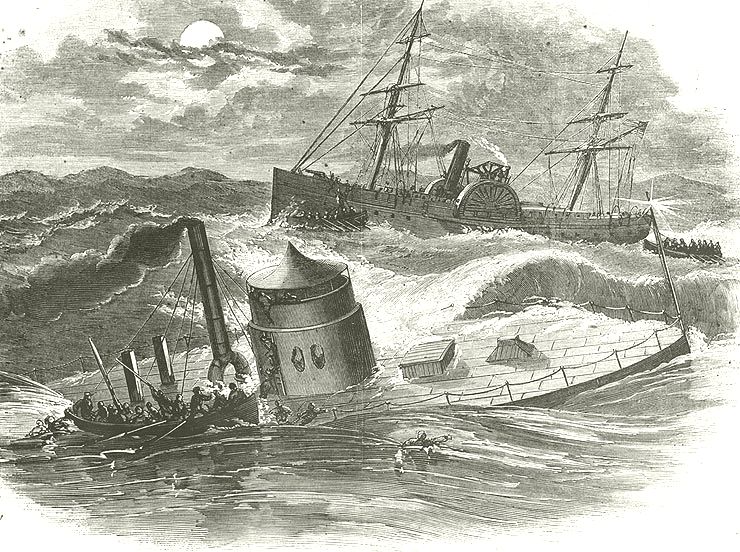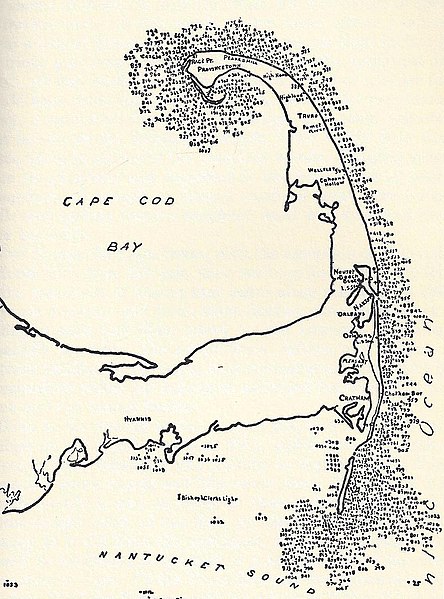Sable Island, often referred to as the “Graveyard of the Atlantic,” is a narrow, crescent-shaped sandbar located in the North Atlantic Ocean. This mysterious island has been the site of numerous shipwrecks over the centuries, earning it a reputation as one of the most perilous locations for mariners.
The treacherous waters surrounding Sable Island have long been the subject of speculation, with various theories proposed to explain the high frequency of shipwrecks. From shifting sandbars and unpredictable currents to dense fog and fierce storms, these natural hazards have conspired to make navigation in the area exceedingly difficult. In this article, we will explore the leading theories behind the shipwrecks near Sable Island, examining the interplay of environmental factors that have claimed so many vessels and lives.


The Shrouding Fog
The first theory about the shipwrecks near Sable Island suggests that thick fog played a significant role. Sable Island, often shrouded in fog, especially during the summer, is located in an area where warm air from the Gulf Stream collides with cold air from the Labrador Current. This interaction produces dense fog banks that severely reduce visibility. Before the advent of modern navigation technology, ship captains relied heavily on instruments like sextants to determine their position using the sun or stars. However, in thick fog, these tools became ineffective, leading to disorientation and causing many ships to stray off course and collide with the island, resulting in numerous shipwrecks.
The Wrath of Storms
The second theory explaining the numerous shipwrecks near Sable Island focuses on the storms and severe weather conditions prevalent in the area. Sable Island is situated directly in the path of many powerful storms that travel along the Atlantic coast of North America. These storms pose a significant threat to ships, particularly the sailing vessels of earlier centuries, which were highly vulnerable to the strong winds and turbulent seas these storms could generate.
The island’s perilous location, near the convergence of major ocean currents such as the Gulf Stream and the Labrador Current, further exacerbates the danger. These currents can interact to create unpredictable, intense weather conditions, including powerful waves and treacherous sea states that make navigation exceptionally challenging. In the days before modern navigational tools, ships caught in these storms often lacked the ability to accurately determine their position, leading to many vessels being blown off course and running aground on the island’s notorious sandbars. The fierce combination of strong winds, towering waves, and limited visibility during storms often spelled disaster for ships attempting to navigate near Sable Island.
The Treacherous Terrain
The third theory regarding the shipwrecks near Sable Island centers on the dangerous terrain and powerful currents surrounding the island. Sable Island is notorious for being encircled by numerous sandbars and ever-shifting underwater sand dunes, creating a perilous environment for ships navigating nearby. These sandbars are difficult to detect and can trap ships, leading them to run aground.
The island’s position near the intersection of significant ocean currents, including the Gulf Stream and the Labrador Current, further increases the risk. These currents are both powerful and unpredictable, often pushing vessels off their intended course and into the treacherous sandbars. Once stranded, ships are vulnerable to the strong waves generated by these currents, which can break them apart quickly.
Before the advent of modern navigation technology, sailors relied on less precise methods to determine their position. In the hazardous waters around Sable Island, even a small navigational error could lead to disaster. The combination of hidden sandbars, strong and unpredictable currents, and the island’s isolated location made it a notorious trap for mariners. This terrain, coupled with the challenges posed by the surrounding currents, has cemented Sable Island’s reputation as a “Graveyard of the Atlantic.”
Navigational Errors
The fourth theory concerning the shipwrecks near Sable Island emphasizes the role of navigational errors, particularly before the advent of modern navigation technology. Sailors of the past relied on tools like the sextant, which required clear skies to measure the position of celestial bodies accurately. However, in the frequent dense fog or cloudy conditions around Sable Island, these instruments became nearly useless.
In such challenging conditions, captains often resorted to “dead reckoning,” a navigation method that involved estimating the ship’s position based on its last known location, speed, and direction. However, this method was fraught with potential for error, especially in the tricky and often deceptive currents and stormy weather conditions characteristic of the waters around Sable Island .
Many shipwrecks occurred because captains miscalculated their position, causing their ships to run aground on the island’s hidden sandbars . It wasn’t until after World War II, with the introduction of radar and other advanced navigational tools, that the frequency of shipwrecks near Sable Island decreased significantly. These new technologies allowed ships to determine their location with far greater accuracy, even in poor visibility, greatly enhancing maritime safety in the area .
Lack of Rescue Equipment and Support
The fifth theory concerning the shipwrecks near Sable Island highlights the perilous lack of rescue equipment and support for shipwreck survivors in the past. Before modern rescue operations were established, the remote location and harsh conditions of Sable Island meant that survivors had little hope of rescue.
In the early days, there were no permanent rescue stations or equipment on the island, leaving the crew and passengers of wrecked ships to fend for themselves. The island’s desolate environment offered limited resources, and many survivors perished due to exposure, lack of food and water, or injuries sustained during the wreck .
The situation began to improve in 1801 when the British government recognized the need for rescue operations on the island. They established the Humane Establishment, which set up rescue stations at both ends of Sable Island. These stations were equipped with lifeboats, food supplies, and medical equipment to provide immediate aid to shipwreck survivors . The establishment of these rescue stations significantly reduced fatalities from shipwrecks, although the stations were eventually closed in 1958 as advances in navigation technology decreased the number of shipwrecks .
This lack of early rescue infrastructure contributed to the high fatality rate of shipwrecks near Sable Island, adding to the island’s grim reputation as the “Graveyard of the Atlantic” .

